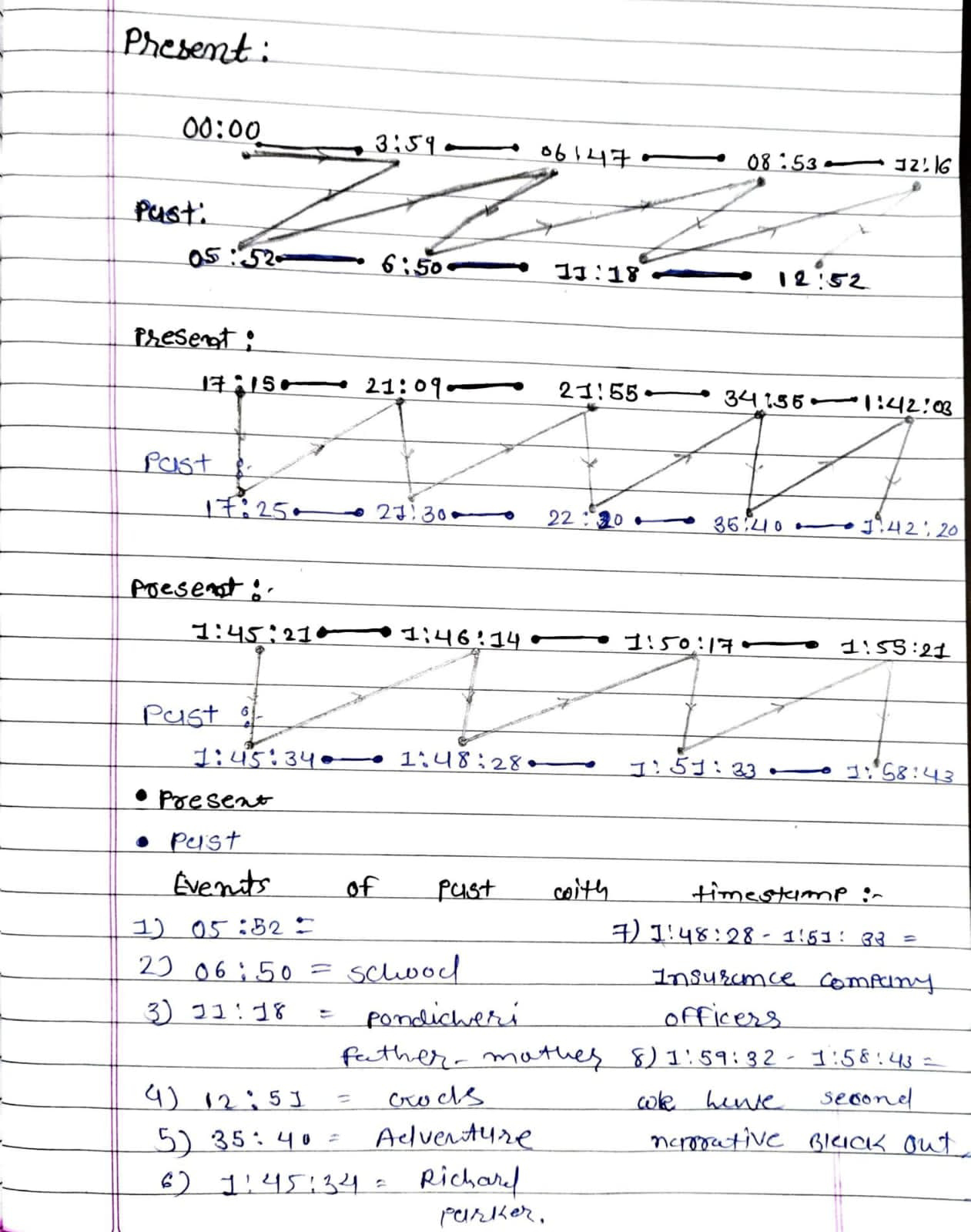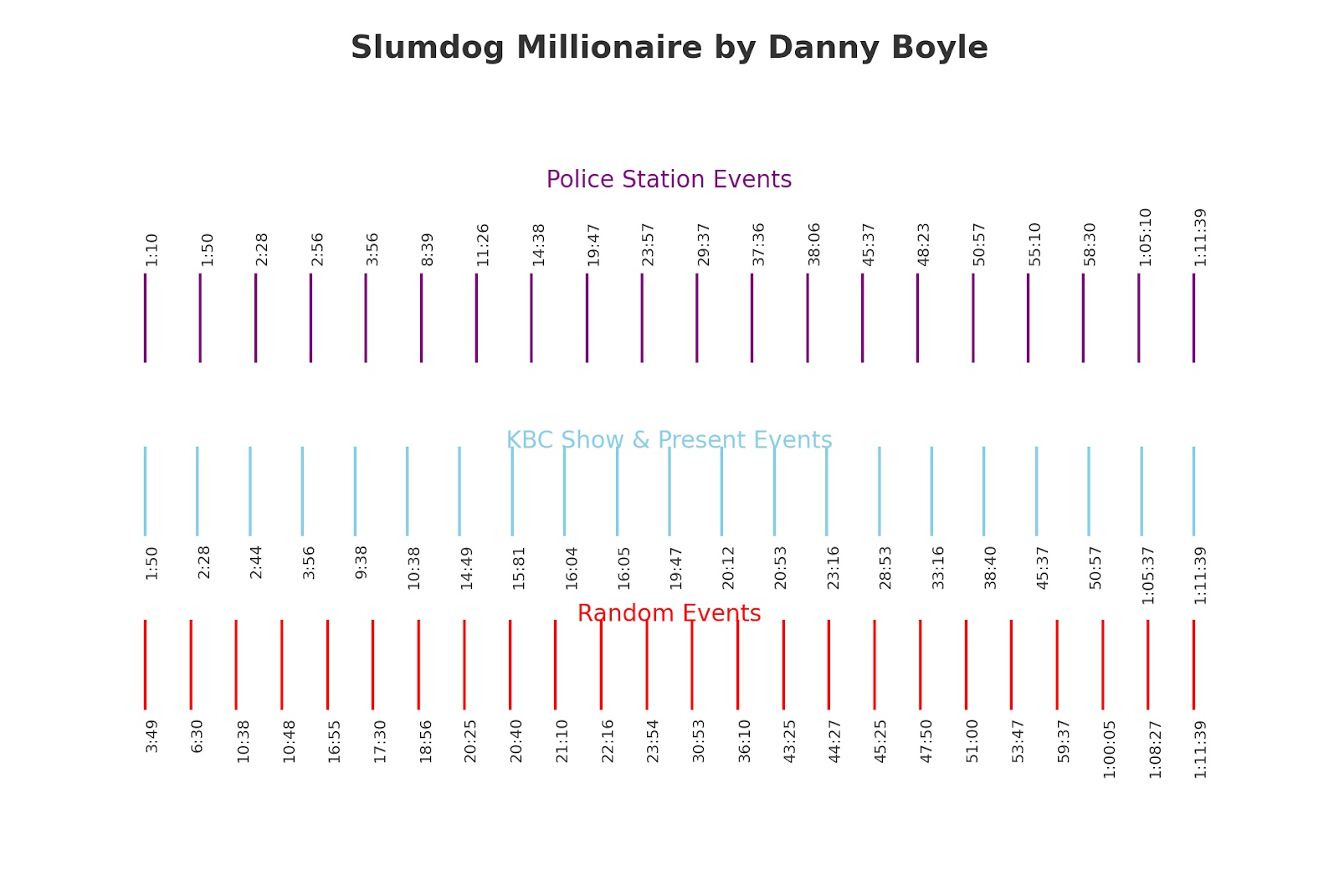"Exploring Narrative Structures: A Comparative Study of Life of Pi, Slumdog Millionaire, and Nithilan Saminathan's Maharaja"
Hello readers,
This blog is crafted in a response of the thinking activity which is given by Dr.Dilip Barad sir. In this task, I'm going to explain the timelines of three different films and show how their stories unfold.
Life of Pi: A Puzzling Story
The movie doesn't tell its story in a simple way. It jumps back and forth between the past and the present. Pi, the main character, tells us his story, but we're not always sure if he's telling the truth.
The movie starts with Pi talking about his life now, but then it quickly goes back to when he was a kid. We learn about his childhood and family, but then suddenly, the story changes again. Pi starts telling a crazy story about being lost at sea with a tiger!
The movie uses special camera tricks to show us the past and make us feel like we're there. It also makes us think about big questions like: Does God exist? What is real and what isn't?
Because of all these things, the movie is very interesting and makes you think a lot.
Slumdog Millionaire
Interrogation and Suspense
Slumdog Millionaire employs a gripping narrative structure by interweaving a high-stakes police interrogation with the protagonist’s journey. Jamal Malik, a young man from the slums, is unexpectedly thrust into the spotlight as a game show contestant. When his astonishing success raises suspicions, he is detained and subjected to brutal interrogation. This tense atmosphere creates a stark contrast to the game show's glitz, grounding the story in the harsh realities of life in the slums. Through flashbacks triggered by the interrogator’s questions, Jamal's life unfolds, revealing a harrowing tale of survival, loss, and resilience. This narrative strategy intensifies the audience's engagement, making Jamal's extraordinary achievements even more impactful.
The Game Show as a Framework
The game show serves as a narrative engine, driving the story forward through a series of escalating challenges. Each question propels Jamal deeper into his past, creating a sense of urgency and anticipation. The stark juxtaposition between the glamorous game show and Jamal's impoverished upbringing underscores the stark social inequalities that permeate Indian society. The close-up shots and restricted framing during the game show sequences magnify Jamal's emotional turmoil and determination, making him a compelling and sympathetic character.
Unraveling the Past
The film masterfully employs flashbacks to illuminate Jamal's formative years. These sequences offer a gritty portrayal of life in the Mumbai slums, characterized by poverty, violence, and a constant struggle for survival. The interconnectedness of these flashbacks with the game show questions creates a complex and intricate narrative. As Jamal recounts his experiences, viewers gain a deeper understanding of his character and the challenges he has overcome, ultimately culminating in a powerful and cathartic conclusion.
Maharaja: A Cinematic Puzzle
Maharaja is a gripping Tamil thriller that follows an ordinary barber's extraordinary journey for revenge. When his home is robbed, he reports the theft of "Lakshmi," a term that leaves both him and the police perplexed. The film cleverly uses this ambiguity to drive the narrative.
The movie's standout feature is its innovative editing style. By skillfully intertwining past and present, it creates a captivating visual experience. The audience is drawn into the protagonist's world as he unravels a web of crime and corruption.
Beyond its technical brilliance, Maharaja delves into themes of loss, revenge, and the far-reaching consequences of one's actions. The film's central character, masterfully portrayed by Vijay Sethupathi, undergoes a transformative journey, reflecting the emotional turmoil of a man driven by desperation.
Ultimately, Maharaja is a cinematic puzzle that rewards viewers with a thrilling and thought-provoking experience.
Conclusion
Three films, three distinct journeys.
Life of Pi, Slumdog Millionaire, and Maharaja are cinematic explorations of the human condition, each employing unique storytelling techniques to delve into profound themes. From the spiritual odyssey of a boy adrift at sea to the gritty realism of a slum dweller's rise, and finally, the vengeful pursuit of a wronged man, these narratives showcase the power of cinema to transport audiences into extraordinary worlds. Through innovative storytelling, including flashbacks, multiple perspectives, and striking visuals, these films leave an enduring impact, provoking thought and stirring emotions.
Reference :
Barad, Dilip. “Dilip Barad | Teacher Blog: Film Studies: An Introduction.” Dilip Barad's Blog, 12 September 2021, https://blog.dilipbarad.com/2021/09/film-studies-introduction.html.
“Frame narrative.” Oxford Reference, https://www.oxfordreference.com/display/10.1093/oi/authority.20110803095832133. Accessed 31 July 2024




.jpg)
.jpg)
.jpg)
No comments:
Post a Comment